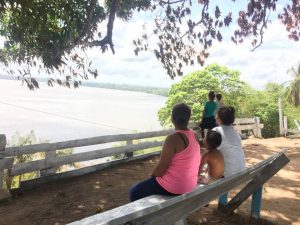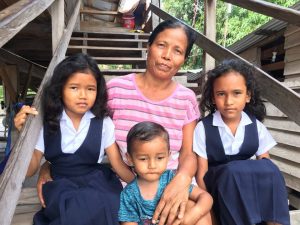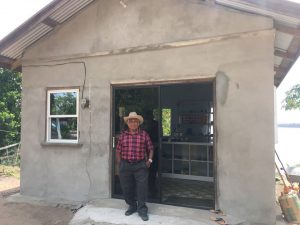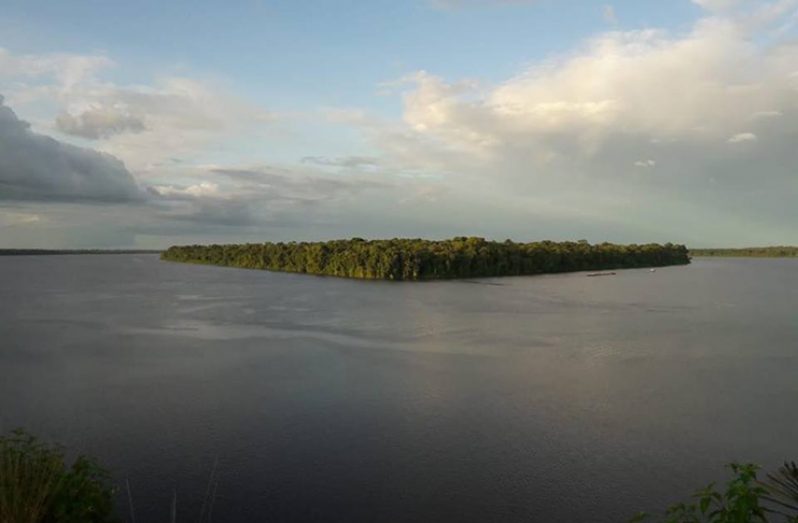ACCESSIBLE only by air or river and sitting some 50 miles from Skeldon, East Berbice on the Corentyne River is the picturesque Indigenous community of Orealla.

With a population of just under 2,000 mainly from the Arawak, Wapishana, Macushi and a handful from the Carib and Warrau tribes, Orealla or ‘White Chalk’ from the Arawak translation, is a closely knit community nestled in the east of Guyana.
Like most Amerindian communities across Guyana, the males are mainly into farming and logging, and so it comes as no surprise that they have some of the best chainsaw operators in the country. Most if not all the sawmills in Crabwood Creek are dependent on this community to supply them with various species of logs, to meet the needs of not only Berbice but neighbouring Suriname, as well as international export markets.
Because of its hilly nature, another major source of income for the community is the supply of white sand and laterite for the construction industry. This has seen several males moving away from farming and becoming excavator and dragline operators.

With its availability of electricity for most of the day and into the night, a radio station which was recently commissioned, as well as the availability of internet service and most
other modern amenities, life in Orealla is quite comfortable.
According to Eric Sarius, 62, these amenities make Orealla the ideal destination for tourists since they get to enjoy nature in its pristine form while still being able to keep in touch with the outside world.
“Long ago people use to depend mainly on logging and subsistence farming, we would hunt and fish and live mostly in thatched-roof houses and manicole walls. There were no doors and windows. People would hang their hammocks and sleep without thinking about anything or anyone. Now you can do the same but a lot of the houses are modern and comfortable, and we can compare with many communities on the coast,” the former educator stated.

He continued that despite travelling across all the regions of Guyana due to his job as an educator, nothing can compare to life in Orealla. “We have some of the most fertile soil in the entire country. I love farming and I always planted wherever I went but they never come out as sweet or as big as they do here. People always talking about highway pine but you try an Orealla pine and tell me which one better. Nowhere else is like Orealla,” he beamed.
Another reside, Anita Russel, who has been living in Orealla for the past 52 years has a house that sits on the hill overlooking the magnificent Corentyne River. With a big smile, she said that waking up to witness the sunrise every day is what gives her strength and a feeling of inner peace. This, she said, she wouldn’t trade for any amount of wealth.
“I am at peace. It makes me happy when the morning comes. You see this in front your eyes. This is just enough. This life we live in here is the best life. In Orealla, not everything is money. You can do something to help yourself be it fishing, farming – there is always something to do to maintain yourself and family. Only lazy people [are] punishing here. If you willing, you can make a living,” she said.

However, despite this economic bustle, Orealla and its neighbouring community of Sipiruta have both still managed to maintain and preserve their cultural identity by ensuring their traditions and customs are passed on to the younger generation.
According to the Toshao of the village, Captain Carl Paneux, the Arawaks were the main tribe that initially settled in Orealla with some Caribs and Warraus. But due to migration, some Wapishanas and Macushis have since settled as well.
Most persons in the community speak fluent English, while the elders still speak in their native Arawak language and this is taught to their children at home.
However, some persons like Eric Sarius, is hoping that the Ministry of Education will hold workshops and look to see if they can make the language a part of the formal education system in the community for its preservation.

“Our culture is very important and we want to make sure it lives on, so we are hoping the government can help us by hosting workshops to help teach the language to everyone in the community or through the school system,” he said.
As for the preparation of the traditional delicacies such as cassava bread, casareep, tuma, farine and crafts the community has ensured that mothers and fathers teach their young ones as soon as they start to move around, about the secrets of planting, caring, harvesting, extracting and preparation.
A very spiritual community, Orealla is home to nine Christian churches, a nursery and primary school, a doctor and two health care workers, a police station, a Guyana Forestry Commission office, several small shops, two guest houses and a launch for river transportation into town.

Amongst the spots to visit are the resort by the savannah, Haiwabo Creek, Mora Point, White Hill, Waramuni Point, Mango Land and Potoka Creek at the end of the village.
Recreation and sporting activities are not lacking in anyway, as there is always the afternoon football match before sunset that culminates with everyone taking a dip in the Corentyne river, or on the weekends when persons can have a real ‘bush cook’ and picnics in the jungle or just spend a day by the riverbanks.


.jpg)











